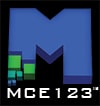This information pertains to an invention that was conceived last week, thought of by the combination of multiple satellites to form a parabolic dish in space that has the ability to combine and amplify the signaling intensity of light detection and matter detection technology. The purpose of the satellite network would be for the purpose of forming a focal point, with the combination of multiple satellites that station themselves as such to focus their combined powers of light amplification and data transmission, to act as one unit, partially, or on their own. The satellite network, “Hubble land”, would be able to see at a microscopic level on other planets. The systems will require an enormous number of new types of technologies, since the amount of information that would be collected within real time would be substantially greater than what the current technologies have been designed to handle.
The technology designs are relatively easy to conceive, while there should be some time to consider the options and document the information with adequate thought into the systems technologies.
Data Transmissions Technologies – Optical, Multi-Wave Type, Multi-Wave Length
These systems pertain to how the data will be sent to the planet, ship, or any other object within space, that requires retrieving the information. The data transmissions technologies should be capable of transmitting the information through a large part of space, including transmissions that could occur to a moving spaceship within other galaxies. The systems will allow the spaceship that would be built from Earth technologies to receive the information, through utilizing the network remotely. Additionally, the satellites would resemble small aircraft that could work within a gravitated area of space, i.e. near a large planet, and also would be able to be launched from a cargo bay of a space ship to gather information with establishing a command within proximity to the ship, within proximity to the flight path of the ship, and be able to gather information through a recon. and then return to the spaceship to refuel.
11/1/2010 7:27:44 PM
Focal Technologies – geospatial focalization technology – multi-dimensional
Focused Geospatial Focalization Technology – this technology pertains to the focus of the satellite network, to construct a grid that focuses the light detections systems to intercept light that is obtained in a way that is adequate for the interception of the light.
11/1/2010 7:22:05 PM
Primary Use of Systems Technologies – the use of the systems technologies would be primarily for gathering information about foreign planets. The advantage of the system comparatively to the Hubble spacecraft, and the other satellite technology that was developed, is that the technology would be capable of collecting information within a geospatial grid, including the detection of matter types, and also detect possible 4D and higher axis incidents. The satellite technologies would be capable of gathering information that would be credible of having witnessed real incidents that pertain to space anomalies, and other types of unknown space effects that are seen with pictures with the Hubble technology, while the geospatial technology would be able to see the pictures on a 4D axis, gathering information with a new type of light focal and gathering system, that combines multiple satellites to gather one image stream, within a real video file, that then has the ability to see with an accuracy equivalent of an electron microscope, from another part of space.
11/1/2010 7:35:13 PM
Satellite Network Technologies – synchronization, command systems, command delegation, systems control, navigation systems, focal adjustment systems, geospatial intensity adjustment systems, light detection interception technologies, stage type selection systems (directional focal, wide angle, parabolic, auto-selection), systems processing and combined systems computation engine.
11/1/2010 7:20:27 PM
Data Retrieval Technologies – geospatial display (exploit invention from within MCE123 Company), systems to study the information and build navigational maps for recon. equipment including spy spacecraft that would then be able to move Hubble land satellite spacecraft within a larger recon. spacecraft.
11/1/2010 7:30:29 PM

















